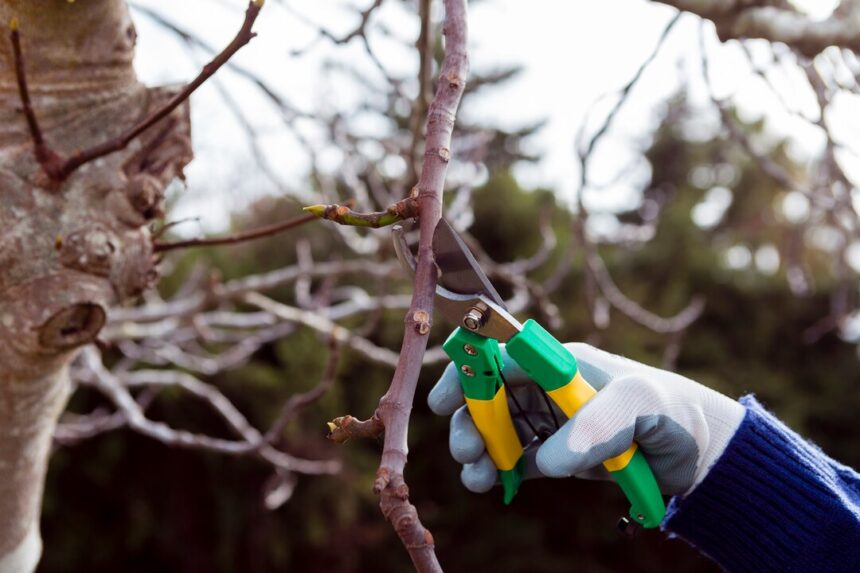Pruning is a vital gardening technique that promotes healthy growth, improves plant structure, and enhances fruit production. When done correctly, pruning removes dead or diseased branches, encourages the development of new growth, and increases air circulation and sunlight penetration, all of which contribute to robust plants and bountiful harvests. Whether you’re tending to fruit trees, berry bushes, or flowering shrubs, mastering the art of pruning can significantly benefit your garden’s productivity and aesthetics.
1. Understand Your Plants
Before picking up your pruning shears, it’s crucial to understand the specific needs and growth habits of the plants you’re tending to. Different species have varying requirements for pruning, including timing, technique, and intensity. Research the optimal pruning practices for each type of plant in your garden to ensure you’re providing them with the care they need.
2. Choose the Right Tools
Investing in high-quality pruning tools is essential for achieving clean cuts and minimizing damage to plants. Sharp bypass pruners are ideal for cutting small to medium-sized branches, while loppers are suitable for thicker branches that require extra leverage. Additionally, a pruning saw may be necessary for tackling larger branches with precision. Keep your tools clean and well-maintained to ensure they perform effectively and minimize the risk of spreading diseases between plants.
3. Remove Dead or Diseased Growth
Begin your pruning regimen by identifying and removing any dead, damaged, or diseased branches. Dead wood not only detracts from the appearance of the plant but can also harbor pests and diseases, compromising overall health and productivity. Use sterilized pruning tools to make clean cuts just above the branch collar, the swollen area where the branch meets the trunk or main stem.
4. Encourage Air Circulation
Pruning helps improve air circulation within the canopy of the plant, reducing the risk of fungal diseases and promoting overall health. Remove crowded or crossing branches that impede airflow and sunlight penetration. Thinning out the interior of the plant allows light to reach lower branches and encourages the development of fruit-bearing shoots.
5. Promote Fruit Production
Pruning plays a crucial role in maximizing fruit production in many fruit-bearing plants. For fruit trees such as apple, pear, and peach trees, summer pruning can help thin out excessive growth, redirect energy towards fruit development, and improve fruit size and quality. Remove water sprouts, suckers, and vertically growing branches to maintain an open canopy that allows sunlight to reach the fruit-bearing branches.
6. Timing is Key
The timing of pruning varies depending on the type of plant and the desired outcome. In general, pruning deciduous trees and shrubs is best done during the dormant season, typically in late winter or early spring before new growth emerges. However, some plants, such as spring-flowering shrubs, should be pruned immediately after flowering to avoid removing next year’s flower buds. Research the specific pruning requirements for each plant species to ensure you prune at the optimal time for maximum benefit.
7. Practice Pruning Caution
While pruning is beneficial for plants, it’s essential to exercise caution and avoid over-pruning, which can weaken the plant and inhibit growth. Aim to strike a balance between removing excess growth and preserving the plant’s natural form and structure. Take your time and step back periodically to assess the plant’s overall appearance and ensure you’re achieving the desired results.
Pruning is a valuable skill that empowers gardeners to shape and nurture their plants for optimal growth and productivity. By understanding the needs of your plants, using the right tools, and employing proper pruning techniques, you can promote healthy growth, encourage fruit production, and maintain the overall beauty and vitality of your garden. With patience, practice, and a keen eye for detail, you’ll soon become proficient in the art of pruning, reaping the rewards of a thriving and fruitful garden year after year.
Join 'Farmers Mag' WhatsApp Channel
Get the latest Farming news and tips delivered straight to your WhatsApp
CLICK HERE TO JOIN






